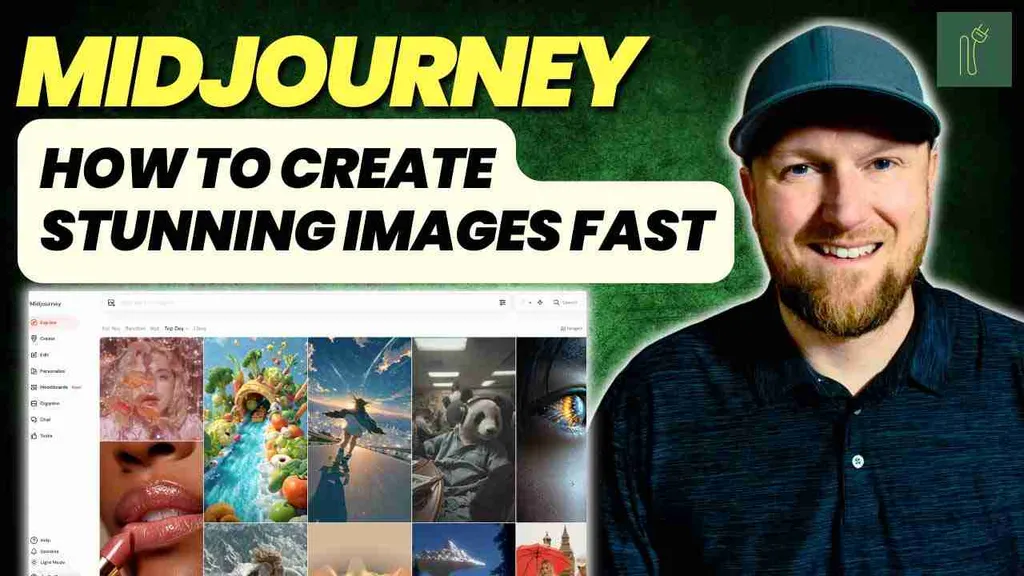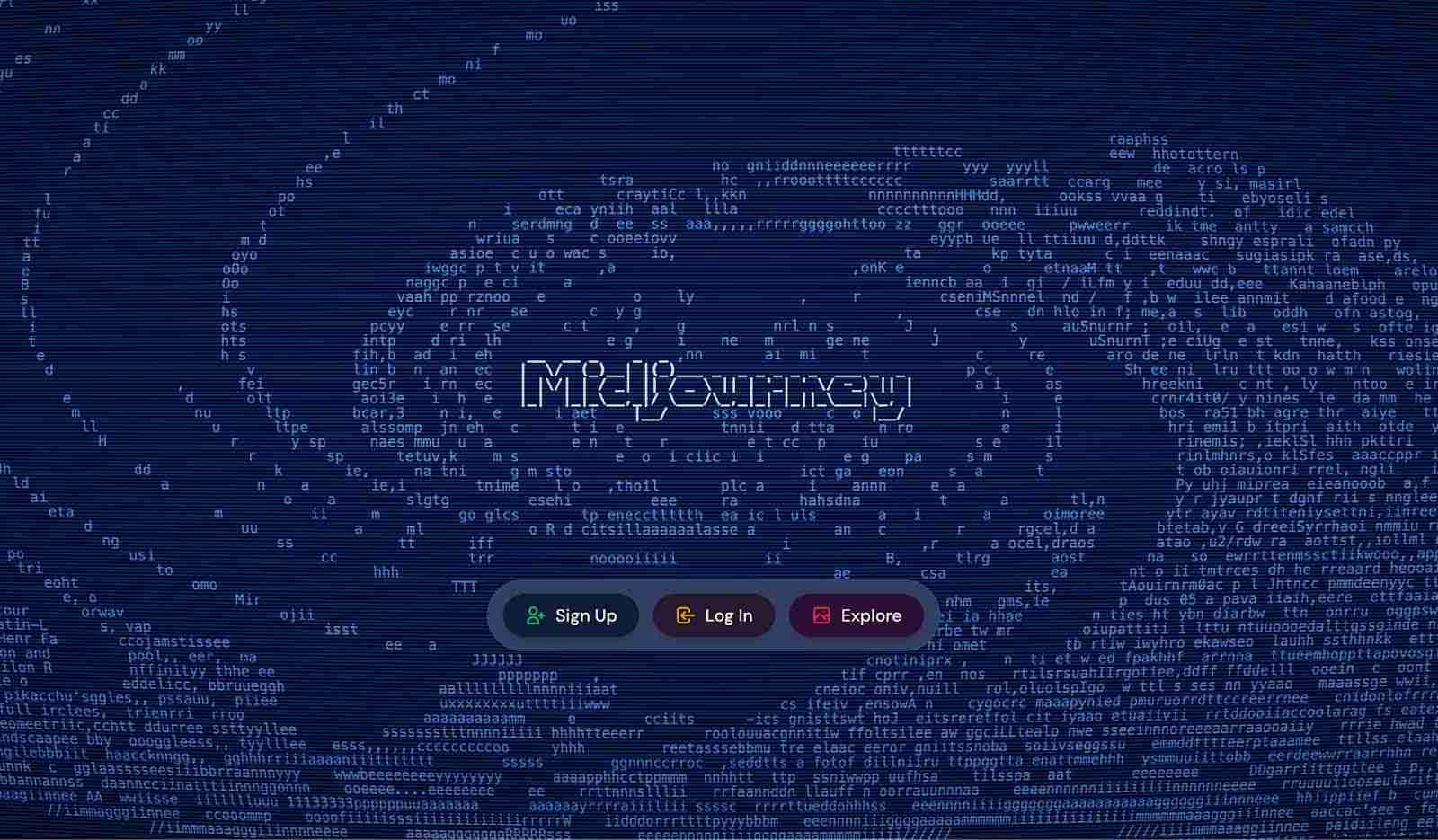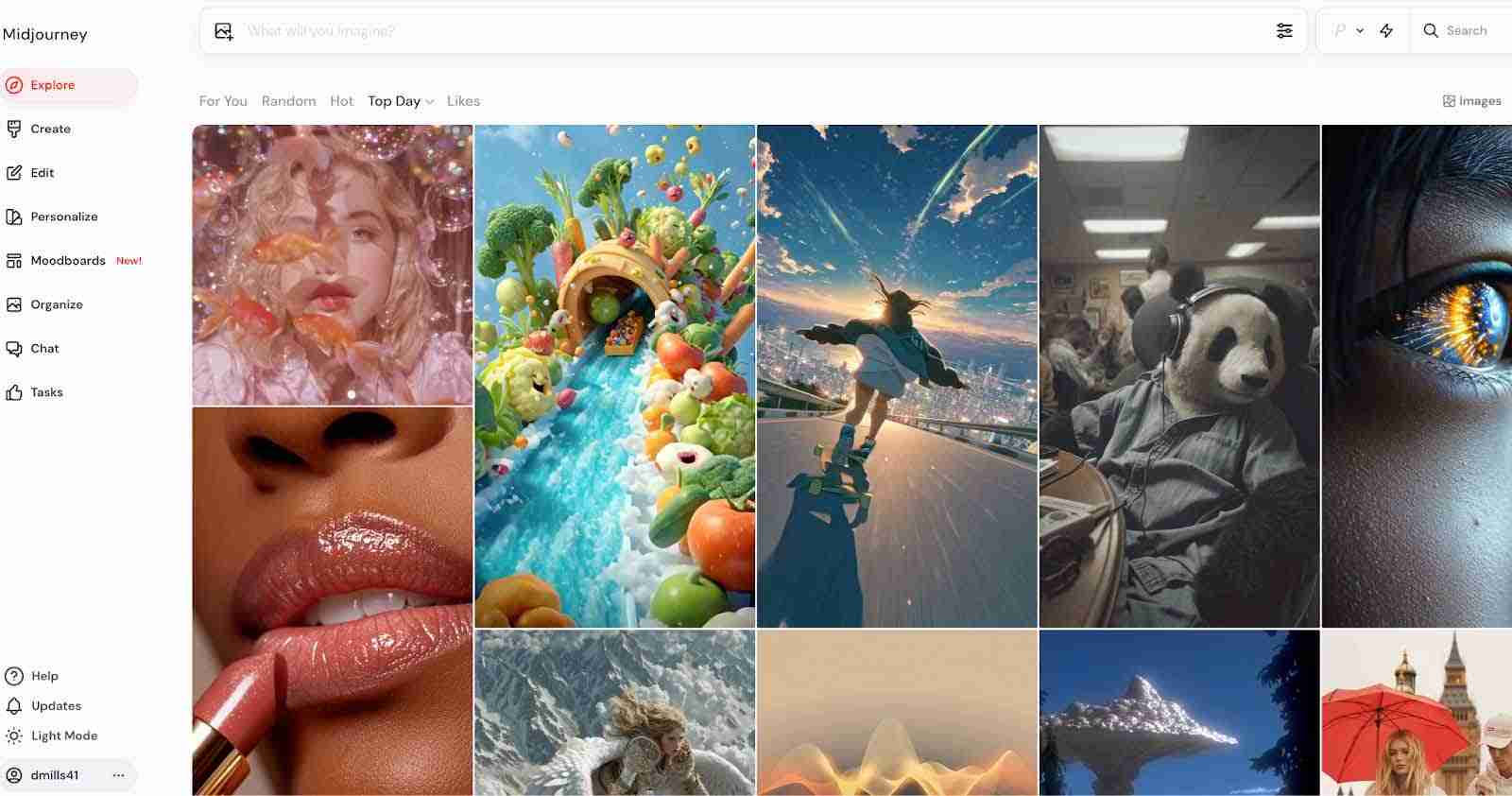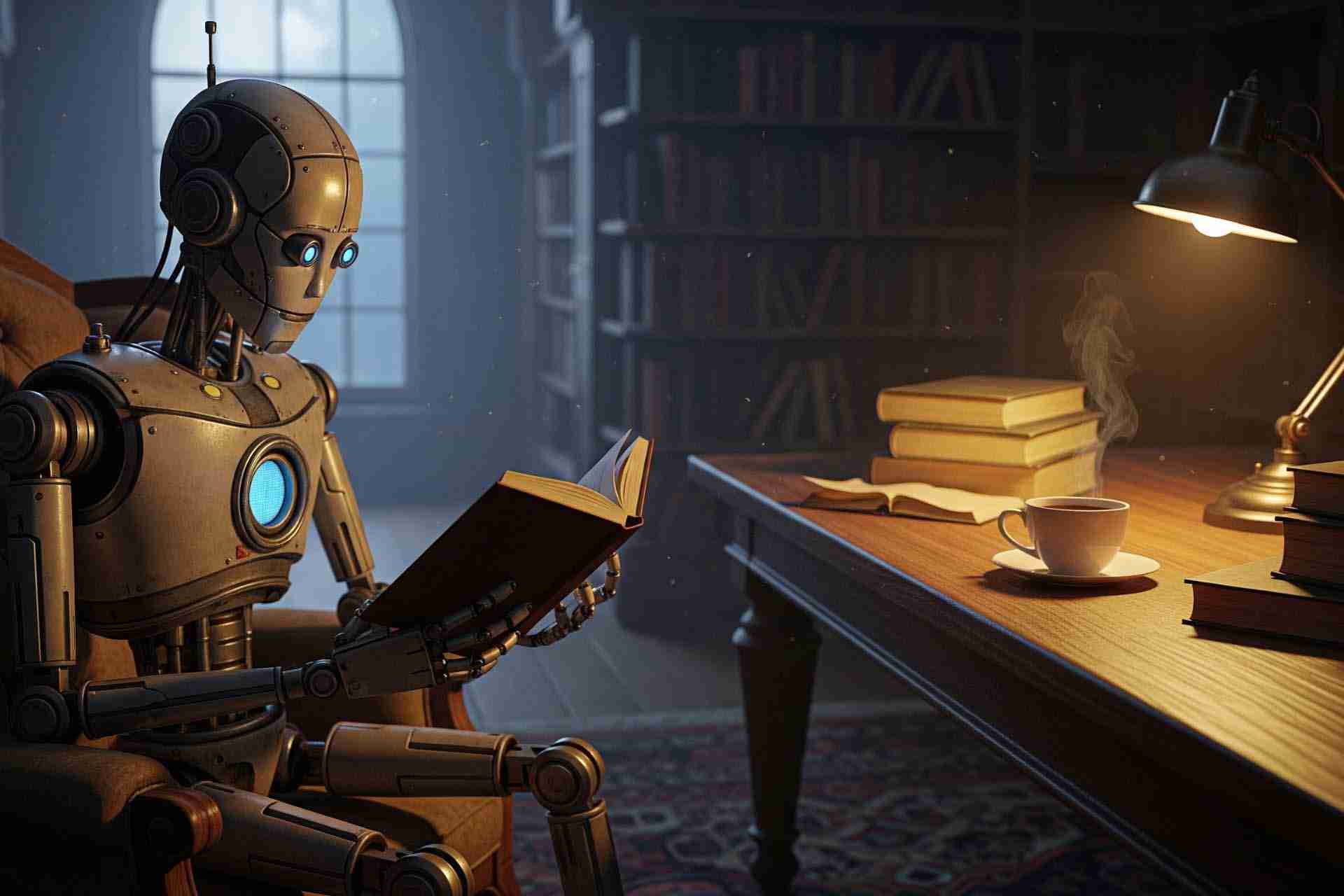What is Midjourney? The AI Image Generator Everyone’s Been Talking About
Midjourney is an AI image generator that turns text prompts into stunning, artistic visuals with incredible creativity and detail. Discover my take after trying Midjourney and see how it compares to other AI art tools.

You’ve likely seen those incredibly detailed and artistic images popping up all over social media. Many of them were probably created with Midjourney, an AI program that transforms simple text descriptions into impressive works of art. This tool has quickly become a favorite for artists, designers, and hobbyists alike. In this guide, I'll break down everything from its core features to pricing and how to write your first prompt.
What is Midjourney?
Midjourney is an AI image generator developed and hosted by the independent research lab, Midjourney, Inc. At its core, it’s a text-to-image AI. You give it a text prompt—a description of an image you want to create—and the AI interprets your words to generate a unique picture. Unlike many other software tools, Midjourney primarily operates through the social platform Discord, using bot commands to create, refine, and upscale images.

How Does Midjourney Work?
The technology behind Midjourney is based on a complex machine-learning process. It uses what are known as diffusion models. Think of it like a sculptor starting with a block of marble. The AI begins with a field of random noise, like digital static, and then slowly refines it, step by step, chipping away the noise until an image that matches your text prompt emerges.
This process involves two key components: a language model that understands your text and an image generation model that knows how to create visuals. The AI has been trained on a massive dataset of images and their corresponding text descriptions, allowing it to learn the relationships between words and visual elements. When you enter a prompt, it uses this knowledge to guide the "sculpting" process from noise to a finished piece of art.

What is Midjourney Used For?
The applications for Midjourney are incredibly broad. Creatives use it for concept art, brainstorming visual ideas for characters, environments, and products without spending hours sketching. Marketers and small business owners generate custom images for social media posts, blog articles, and advertisements, saving money on stock photography.
Authors create book covers, hobbyists bring their fantasy worlds to life, and web designers mock up visual styles for websites. It’s also just a fun tool for personal projects. Whether you want to see a "cyberpunk cat wearing sunglasses" or a "photorealistic portrait of an astronaut on Mars," Midjourney can make it happen.
Midjourney Versions
Midjourney is constantly being updated, with each new version offering significant improvements in quality, realism, and prompt understanding. The journey started with V1 and has progressed rapidly. Version 4 was a major leap forward, producing much more detailed and coherent images.
Version 5 and its refinements (V5.1, V5.2) pushed the boundaries of photorealism and artistic style. The latest major release, V6, is even better at interpreting natural language prompts, generating more realistic details like hands, and including the ability to render text within images. There is also a specialized "Niji" model, which is fine-tuned for creating anime and illustrative styles.
Midjourney Modes
Midjourney offers a few different generation modes to fit your needs, which primarily control the speed at which your images are created. The default is Fast Mode, which gives you immediate access to a GPU and generates your images as quickly as possible. This mode consumes your monthly subscription's GPU time.

If you run out of Fast hours or want to conserve them, you can switch to Relax Mode. In this mode, your prompts are placed in a queue, and your images are generated as GPUs become available. It can take anywhere from a few seconds to several minutes, but it doesn't use up your fast GPU time, allowing for unlimited generations (on Standard, Pro, and Mega plans). There's also a Turbo Mode for users who need results even faster than Fast Mode, but it consumes GPU time at double the rate.
How Much Does Midjourney Cost?
Midjourney operates on a subscription model, as it no longer offers a free trial due to high demand. The plans are based on the amount of "Fast GPU time" you get each month.
Here is a breakdown of the current pricing tiers:
| Plan | Monthly Price | Annual Price (Per Month) | Fast GPU Time | Relax GPU Time |
|---|---|---|---|---|
| Basic Plan | $10 | $8 | 3.3 hr/month | N/A |
| Standard Plan | $30 | $24 | 15 hr/month | Unlimited |
| Pro Plan | $60 | $48 | 30 hr/month | Unlimited |
| Mega Plan | $120 | $96 | 60 hr/month | Unlimited |
All plans include access to the member gallery, the official Discord, and commercial usage rights for the images you create.
Getting Started with Midjourney
There are two main ways to start using Midjourney. The classic method is through Discord. You'll need to create a Discord account if you don't have one, then join the official Midjourney server. Once inside, you find a "newbie" channel, type the /subscribe command to choose a paid plan, and you're ready to start prompting.
More recently, Midjourney has launched an alpha version of its own website with image generation capabilities. For now, access is open to users who have generated at least 1,000 images, but it's slowly rolling out to more users. This web-based interface provides a more traditional user experience, removing the need to work inside Discord.
How to Prompt Midjourney
Crafting a good prompt is the key to getting great results. A basic prompt can be as simple as a few words, but adding detail helps the AI understand your vision. Think about the subject, the style, the lighting, and the composition. For example, instead of "a castle," try "a fantasy castle on a mountaintop at sunset, epic lighting, cinematic, photorealistic."
You can also use parameters to control the output. The --ar parameter sets the aspect ratio (e.g., --ar 16:9 for a widescreen image). The --v parameter lets you choose a specific Midjourney version (e.g., --v 6). Using descriptive words for art styles (like "impressionist painting," "vaporwave," or "3D render") can dramatically change the look and feel of your final image.
Here’s an example of a prompt and the kind of image it can generate.
Prompt: cinematic photo of a robot reading a book in a cozy, dimly lit library, steam rising from a coffee cup, detailed, photorealistic --ar 16:9 --v 6

This prompt would produce a high-quality, atmospheric image of a robot in a library, tailored to a widescreen format and using the latest model for maximum realism.
Pros and Cons of Midjourney
Midjourney is an incredible tool, but it's not without its drawbacks. On the positive side, it produces some of the most aesthetically pleasing and high-quality AI images available. Its artistic style is a major strength. The community on Discord is also very active, providing a great place to get inspiration and help. The constant updates mean the tool is always improving.
However, there are cons to consider. The lack of a free plan is a barrier for some users. The Discord-based interface can feel clunky and confusing, especially for those unfamiliar with the platform. While V6 has improved, the AI can still struggle with generating anatomically correct hands or coherent text. Finally, the speed of generation depends entirely on your subscription plan and the current server load.
Midjourney Alternatives
While Midjourney is a powerhouse, several other tools offer different features and pricing models. These alternatives might be a better fit depending on your needs.
Here’s a closer look at some of the best alternatives:
Stable Diffusion
Stable Diffusion is a great alternative because it's open-source. This means you can download the model and run it on your own computer for free, giving you complete control over the generation process. It's highly customizable with thousands of user-trained models for specific styles. This is the perfect choice for tech-savvy users who want to experiment without limits, but it does have a much steeper learning curve than Midjourney.
Bing Image Creator
Powered by DALL-E 3, Microsoft's Bing Image Creator is a fantastic free option. It’s incredibly easy to use and accessible directly from your web browser. Because it uses DALL-E 3, it's excellent at understanding natural language and following complex prompts. This is the best alternative for anyone who wants to try AI image generation for the first time without any cost or commitment.
Playground AI
Playground AI is another strong contender that offers a user-friendly web interface and a generous free tier. It allows you to create a certain number of images per day for free, making it a great middle-ground option. It also includes built-in editing tools, which is a useful feature not found in Midjourney's standard workflow. It's a great choice for those who want more of an all-in-one platform with a social component.
Adobe Firefly
For professionals already working within the Adobe ecosystem, Adobe Firefly is a compelling choice. Its main advantage is that it was trained exclusively on Adobe Stock images and public domain content, which means the images it generates are commercially safe and free of copyright concerns. Firefly is integrated directly into apps like Photoshop and Illustrator, making it a powerful tool for professional creative workflows.
DALL-E 3
Developed by OpenAI, DALL-E 3 is known for its incredible ability to follow prompts with precision. If your prompt describes a complex scene with multiple subjects and actions, DALL-E 3 is often the best at getting all the details right. It is directly integrated into ChatGPT Plus, so if you're already a subscriber, you have access to a top-tier image generator as part of your subscription.
Summary
Midjourney has earned its reputation as one of the leading AI image generators for a reason. Its ability to create stunning, artistic, and high-quality images from text is second to none. While its reliance on Discord and subscription-only model might not be for everyone, it remains a top choice for anyone serious about creating AI art. As the technology continues to advance, Midjourney is sure to remain at the forefront of this creative revolution.
FAQs
Can I use Midjourney AI for free?
No, Midjourney no longer offers a free trial. To generate images, you must subscribe to one of their paid plans.
Can I use Midjourney pictures commercially?
Yes, if you are a paying subscriber, you are granted commercial usage rights for the images you create. You are free to use them in your projects, for marketing, or to sell them.
Can I edit the generated images?
Absolutely. Once an image is generated, you can download it and edit it using any photo editing software like Adobe Photoshop or GIMP. Many artists use Midjourney as a starting point and then add their own touches.
Can I use Midjourney on my phone?
Yes, since Midjourney primarily works through Discord, you can use it on your phone through the Discord mobile app. The experience is very similar to using it on a desktop.
Can Midjourney make videos?
Currently, Midjourney does not natively generate videos. It is focused on still image generation. However, you can use third-party tools to animate the images you create with Midjourney.
Is Midjourney open-source?
No, Midjourney is a proprietary, closed-source model. Unlike Stable Diffusion, you cannot download it or view its source code.

